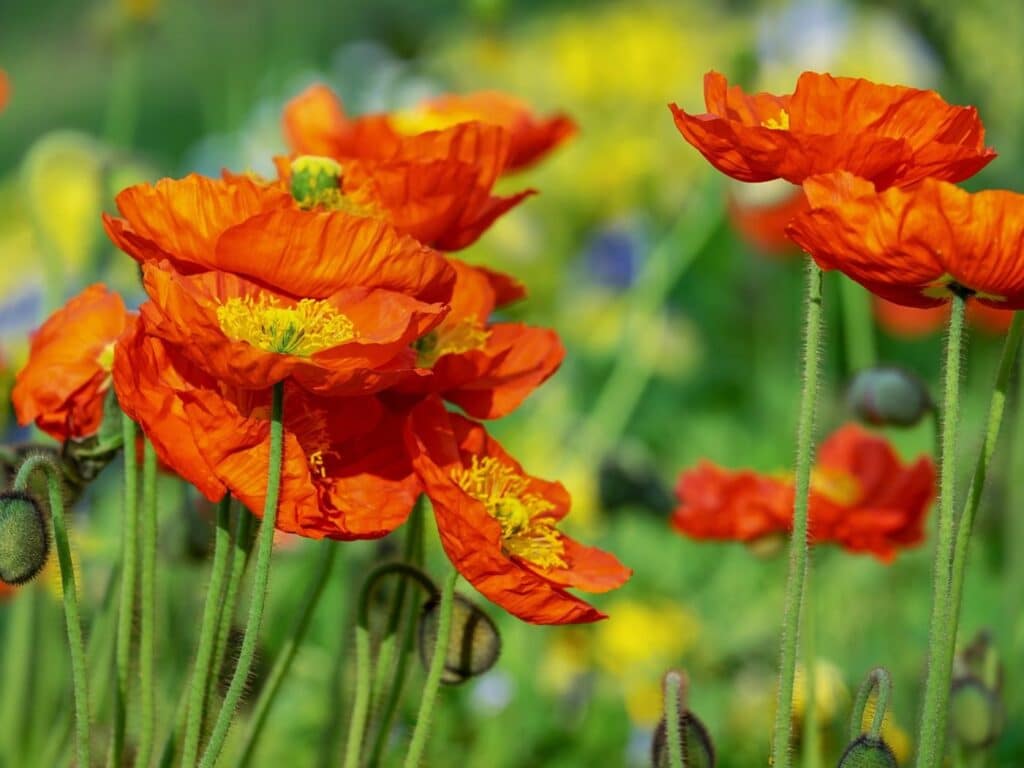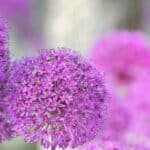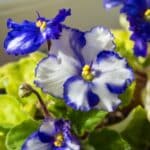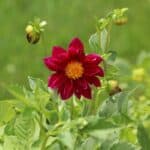The poppy flower (Papaver) or corn rose is iconic because it is the national flower of Poland and red poppies are often worn as a wartime remembrance. At the same time, these flowers have some crucial historical significance; most love growing them because they are striking and beautiful.
These wildflowers stand out in open fields because they produce large single flowers on stems that stand tall above the rest of the foliage. Each flower lasts only about a day, but a plant can have up to 400 flowers during its bloom season.
Poppies are especially impressive if combined with complementary companion plants like ornamental grasses, alliums, sage, bearded irises, cosmos flowers, and phlox.
In this guide, we will examine why these companions work well with poppies and the best ways to use them in your garden.
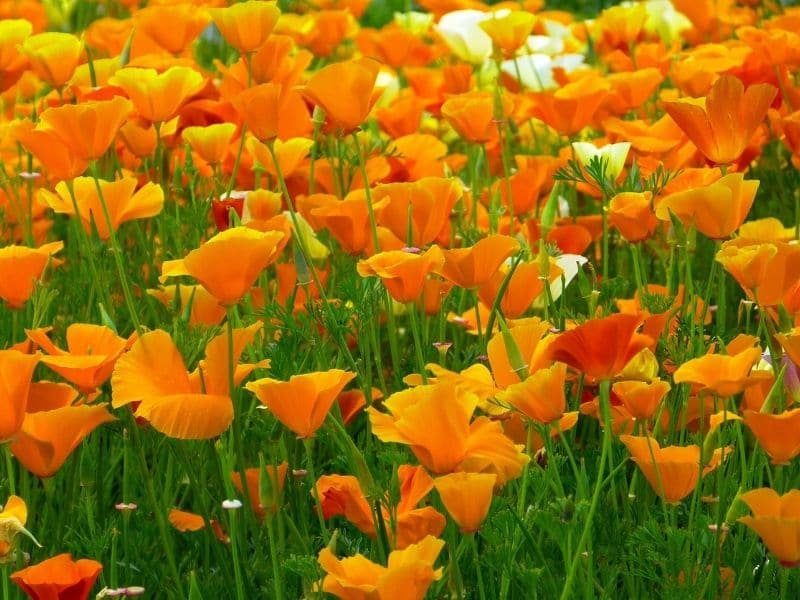
What to Grow with Poppies
Red poppies are the most popular and iconic. Still, these showy perennials come in many different colors, which include coral, peach, orange, yellow, soft pink, lavender, cream, and even blue tones.
When doing companion planting, it is good to select plants that can accentuate the vivid blooms of these beautiful flowers. Many gardeners also prefer to pair them with evergreens so there won’t be empty patches when the poppies die back for winter.
It is also essential to pair plants with similar growing conditions together.
Poppies grow best in a sunny spot and must be planted in well-drained soil. They can grow well in average or poor soil conditions. These flowers are relatively drought-tolerant but require some maintenance since they must be dead-headed to encourage more blooms.
Let’s look at some poppy companion plants that can grow well in relatively dry and poor soil conditions in full sun.
Ornamental Grasses
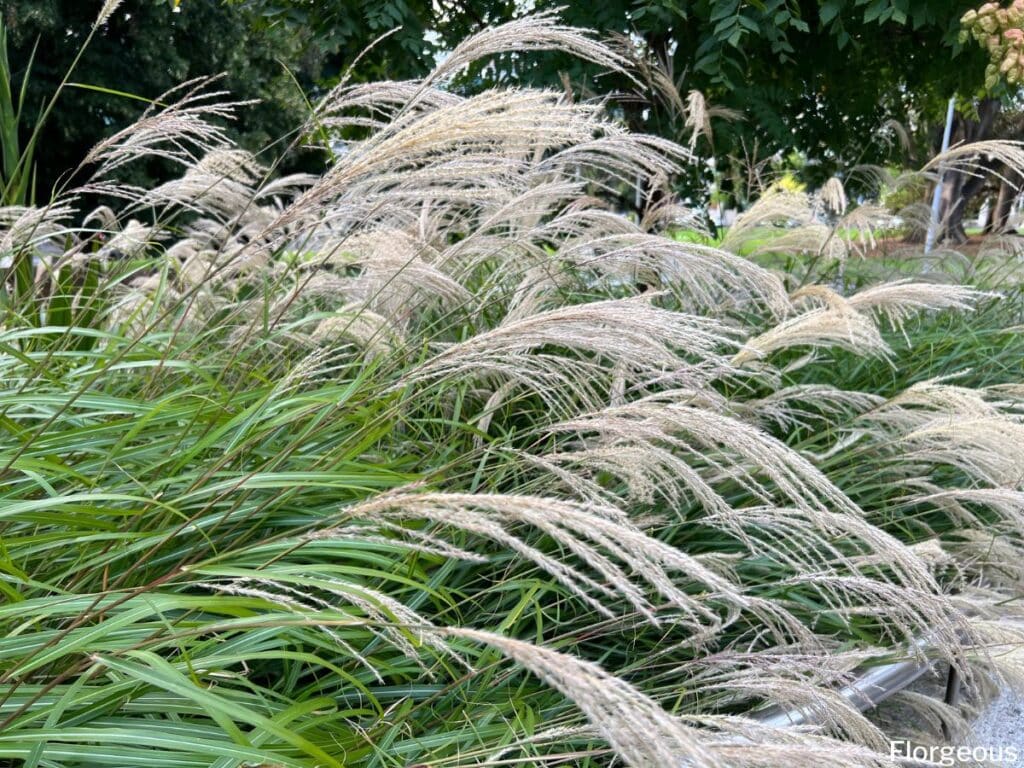
If you want your poppies to truly ‘pop’ out, then it is best to randomly position them among a solid backdrop of wispy greenery like ornamental grasses. The green grasses will create a strong contrast so bright oriental poppies can stand out vividly. This is an excellent concept for creating showy prairies or meadows.
It is essential to consider the type of ornamental grasses you want to include in these wide-open spaces. The grass variety should grow well in the same full sun, in slightly dry areas as poppies and they shouldn’t be too tall, or you won’t be able to see the beautiful flowers.
Varieties like fountain grass (Pennisetum alopecuroides) or little bluestem (Schizachyrium) can be excellent poppy companions because they are similar in height and naturally occur alongside wildflowers. Fountain grass can look charming around poppies because their wispy white blooms will soften your spaces.
Just be careful not to use poisonous poppy varieties like alkaloids in grassy meadows because these can affect the health of grazing animals.
Alliums
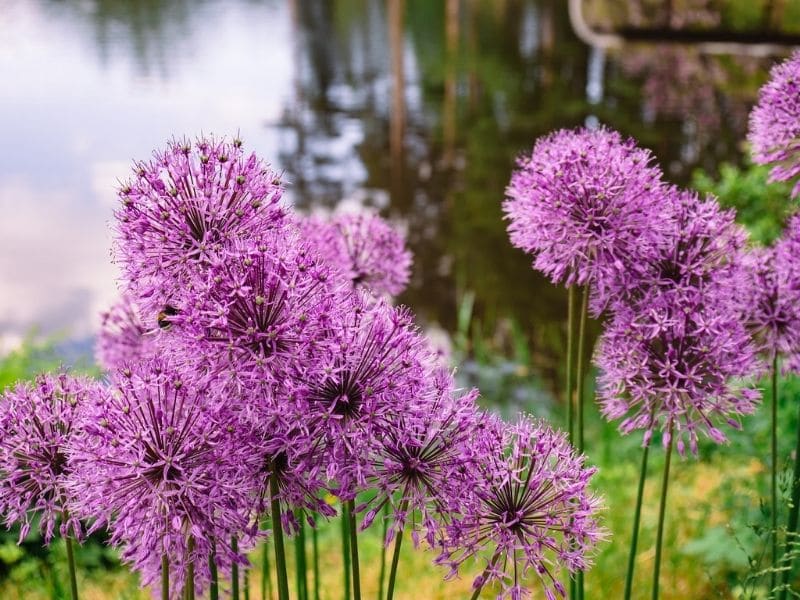
Ornamental alliums (Allium) will add great contrast and color to your garden bed and look striking alongside poppies and ornamental grasses. There are many varieties of ornamental alliums; some have much bigger and showier flower heads than others.
Most allium varieties will grow well next to oriental poppies because they all grow well in any soil type, in direct sun, and are drought tolerant.
You can mix alliums, poppies, and other filler plants all over your garden to create a cottage garden effect or a layered border effect with tall alliums in the back and contrasting yellow or red poppies in the front.
Related: Allium companion plants
Sage
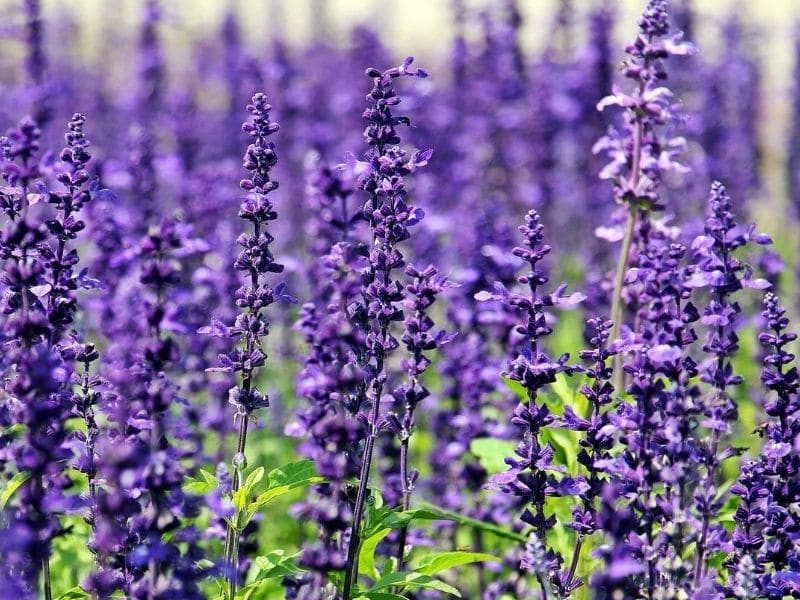
Sage (Salvia) is a winning ornamental plant in any dry and sunny garden space. This beautiful plant offers plenty of benefits because it attracts beneficial insects and looks beautiful. The grayish leaves of this woody evergreen shrub can create a wonderful backdrop for bright flowering plants, and its vivid purple flower stalks will complement most poppy varieties very well.
Sage forms a dense shrub and can be used as a backdrop or filler plant for your garden. This herb grows well in direct sun and should be planted in well-drained soil. Sage can tolerate relative moisture but grows and flowers best in dryer conditions.
Gardeners love to pair shrubs of beautiful sage with vibrant poppies to form showy mixed hedges or borders.
Bearded Irises
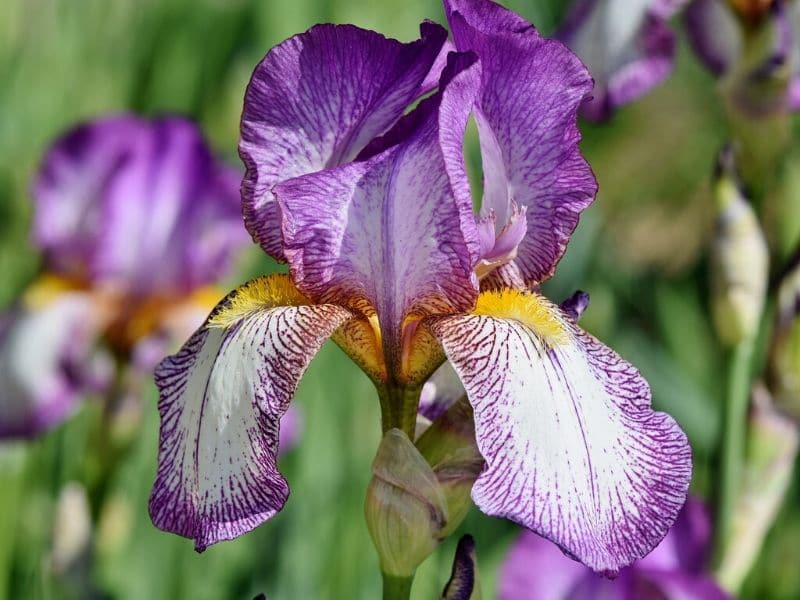
Bearded irises (Iris x germanica) can also look stunning alongside poppy flowers. These bulb plants come in many colors and are easy to grow and maintain.
This specific variety of iris can grow well in full sun but prefers a little more water than poppy flowers typically receive in native regions. Bearded irises love moist soil, but they can tolerate dry spells. If you pair poppy flowers and bearded irises together, it is best to water your garden at least once a week and place these plants in well-drained soil.
These two plants are similar in height and can be mixed all over your garden. The slender leaves of these irises will help fill out the garden bed to create a solid backdrop of green so the flowers can stand out.
Cosmos
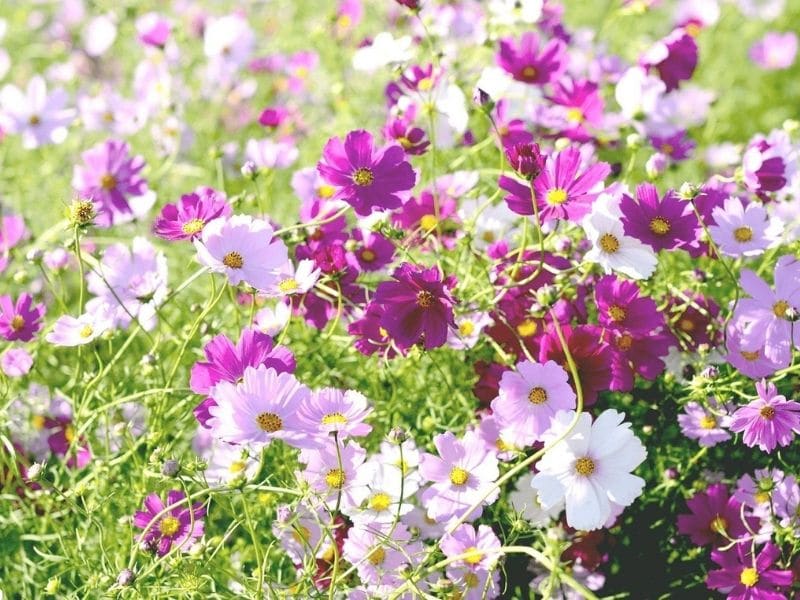
Cosmos flowers (Cosmos) are native wildflowers that can add lots of color to your garden with their vivid pink, purple, and white blooms. They can be excellent poppy companion plants because they bloom in early summer and will continue long after the poppy flowers have stopped flowering.
These vivid flowers can self-sow and have a high germination rate, so they can easily and quickly spread independently. They are often spotted growing on roadsides and in open fields.
Cosmos flowers love plenty of direct sunlight, and they can flourish in poor soil conditions. These flowers prefer dry conditions and should be watered only sometimes.
Phlox
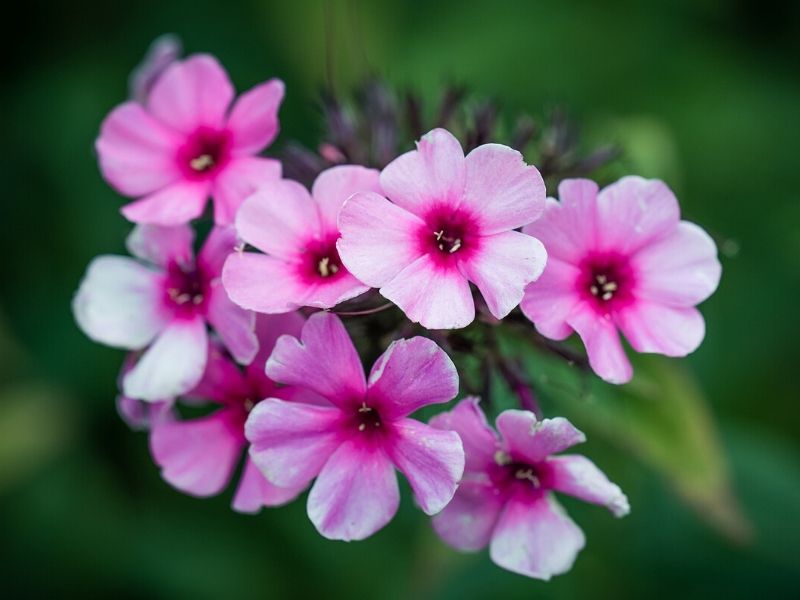
Phlox varieties like creeping phlox can be excellent poppy companions if you want a vivid garden filler or ground cover. These plants will bloom vigorously from mid-spring to mid-autumn and form a dense shrub-like growth ideal for creating borders or barriers around your garden beds.
These annuals enjoy full sun but can tolerate a little afternoon shade in warmer climates. They will grow well in just about any well-drained soil and can be drought-tolerant.
Most varieties of phlox are shorter than poppy flowers. They should be positioned towards the front of your garden and can be mixed alongside taller poppy flowers for an exciting effect.
What NOT to Grow with Poppies
Gardeners should avoid planting poppies with plants that require lots of moisture. If poppies are kept too wet or humid, they will become susceptible to fungal diseases or their root systems will start to rot.
You should also avoid planting poppies underneath large trees or tall shrubs because they won’t flower if they don’t get enough sunlight. Shade-loving perennials like ferns and begonias are also poor companions because they won’t grow well in full sun positions.
Landscaping Ideas for Poppies and Companions
Poppy flowers and all of the companion plants we discussed in this guide are very popular in ornamental gardens, wildflower gardens, and cutting gardens and they also grow naturally in the wild. These plants can be used to create all sorts of interesting garden features like the following.
Wildflower Gardens
You can create beautiful wildflower gardens filled with lush color and growth by pairing poppies with other species like cosmos, phlox, sage, alliums, and ornamental grasses. These hardy plants are also perfect for rainfall gardens and can be used to add a dash of color to dry parks or xeriscape gardens.
Layered Borders
Poppies are tall and can be planted between a taller backdrop plant like sage and a shorter shrub plant like phlox. This type of combination of florals will create a showy layered backdrop filled with color and lush growth.
Prairie Scapes
Poppy flowers and other wildflowers like cosmos flowers can be mixed among tall ornamental grasses in prairies to create showy landscapes. These spaces will look picturesque when bright flowers are peeking out among mass-planted greenery.
Final Thoughts
Poppy flowers are much more than just sentimental or symbolic flowers. These gorgeous plants are ideal for creating showy wildflowers and cutting gardens, and they can be used to create all sorts of decorative features like mixed hedges, layered borders, and prairies.
The best companion plants to include in these showy features are phlox, cosmos flowers, ornamental grasses, bearded irises, sage, and alliums.
Any combination of poppy flowers and these companion plants is bound to look charming in your garden. We hope you will enjoy trying out these new combinations or landscaping ideas.
Learn more about the poppy flower symbolism to see why people love this plant!

